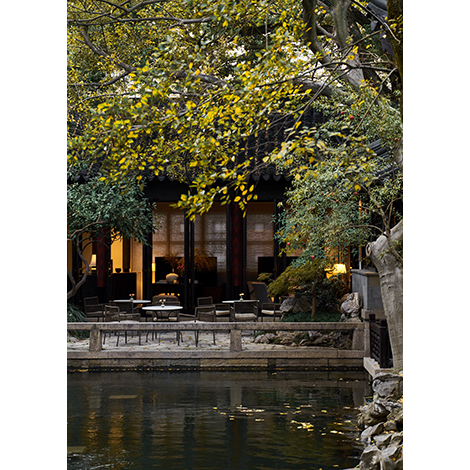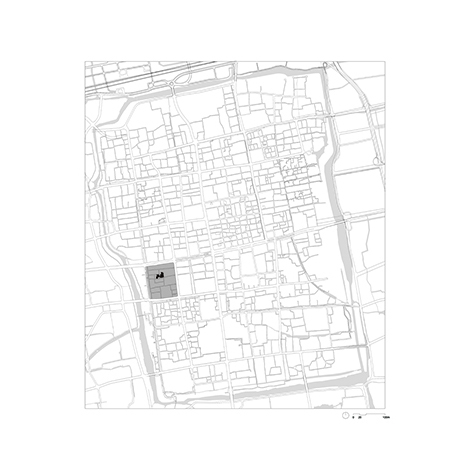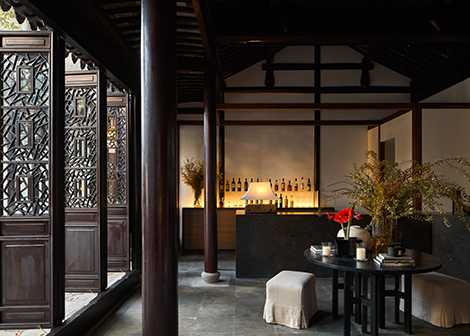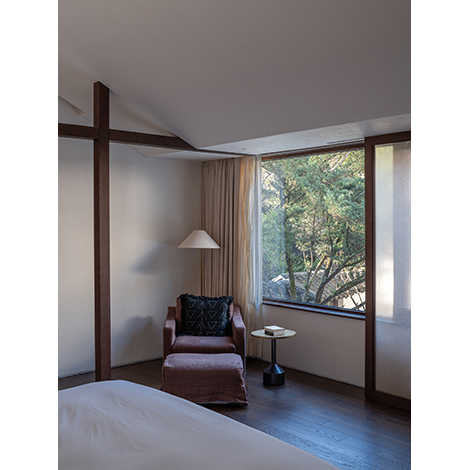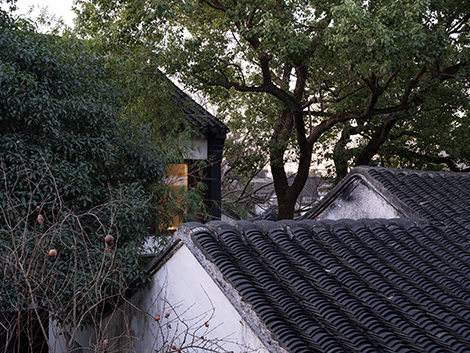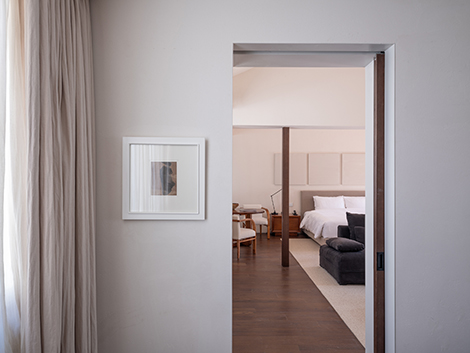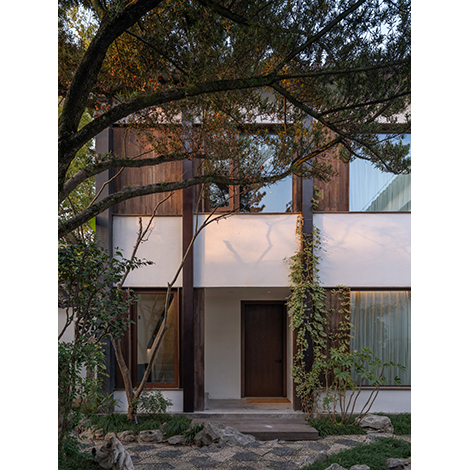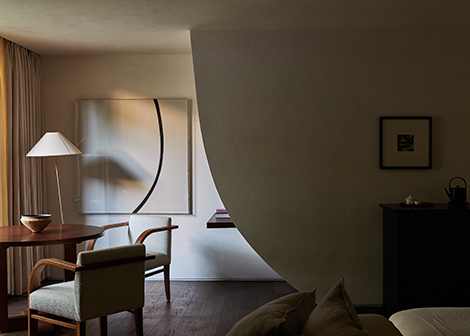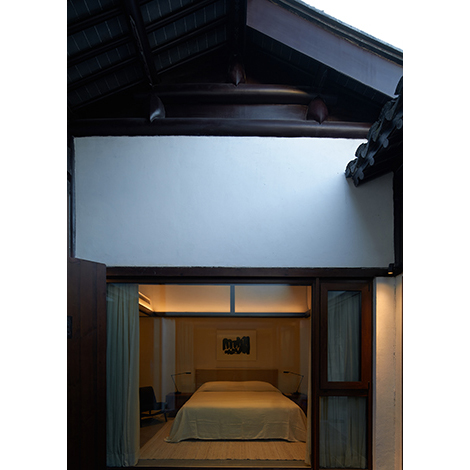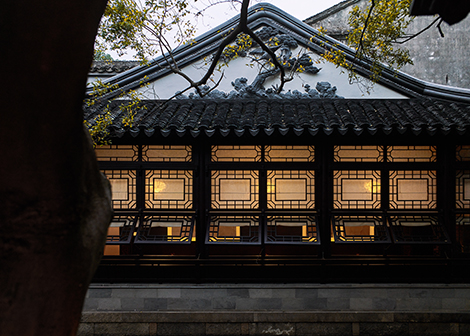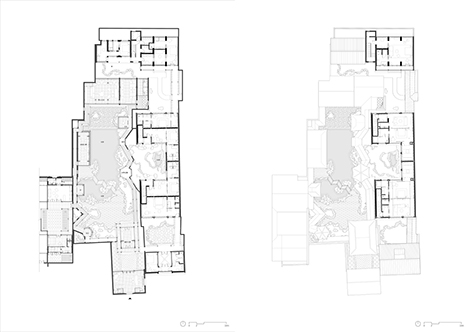Jiangnan House Changyuan in Suzhou is an active endeavor of Suzhou Famous City Protection Group and Jiangnan House towards the preservation and adaptive reuse of the existing garden heritage.
Changyuan is a classical garden built in Suzhou in late Qing Dynasty, at 22 Miaotang Street, west of Suzhou City. It covers an area of around one Chinese Mu (0.16 acre), with a delicate spatial layout and exquisite garden landscape. The garden part of Changyuan was once destroyed in history and later restored, but has never been open to the public, and seemed rather decayed at the beginning of the project. The residential part of Changyuan is on the west side, and has been divided into multiple parts by former residents. The houses went through partial damage and incremental building, while the spatial structure has also been disturbed and is still under restoration. But the buildings and courtyards to the east of Changyuan, with less functional connection to the gardens in history, had formed a rather coherent whole with Changyuan in the spatial aspect.
The east side also consisted of three independent layers of courtyards, with its own entrance on Miaotang Street, and was rented by a company as its workspace. Due to limited east-west width, the circulation space across three courtyards takes up much of the functional space. The first row of this courtyard-building group along Miaotang Street is a traditional wood-structure-formed architecture, in fact a gate building. The original building is a single-layered brick-wood structure. The wooden roof frame was renovated in the 1980s, as small green tiles were traditionally laid upon wooden rafters. Its main door on the south side is a bamboo silk door, which is one of the few historical relics on the site. The two rows in the middle are modern brick-concrete structures with sloped roofs built in the 1980s and 1990s. The walls and concrete components jointly support the precast concrete floor slabs. The roofs are made of precast concrete purlins paved with bricks and then laid with small green tiles. The last row on the north side is also a brick-concrete structure building of the same period. The walls are mainly load-bearing and support precast concrete panels. The roof is made of wooden purlins paved with bricks and small blue tiles. Its overall appearance is decorated in the style of an antique building. Because this group of buildings are close to Changyuan, they are classified as buildings and areas with different protection levels. The renovation design must be carried out under strict protection restrictions. In particular, almost no changes can be made to the gables and courtyards of Changyuan.
The original building was quite deep, and the four rows of houses naturally formed three small courtyards in the south, middle and north. There was also a small courtyard between the last row of houses and the rear wall, which people could not enter before. Since the three small courtyards are connected with the cloister of Changyuan on the west side, the external space of the grouped houses has the possibility of expanding towards the garden.
Taking various factors into account, it becomes the essential design issue to fully utilize the existing interior space under the strict protection restrictions, maximize the number of guest rooms, benefit the rooms with the courtyard views as much as possible, while keeping adequate privacy for the guests. Considering the circulation layout, the inner corridor within the east part buildings were first canceled, so that guests would enter the three courtyards via the garden of Changyuan, and then go to the rooms through the corridors of the courtyards. Thus the garden and the courtyard are naturally included in the guest experience, thus preventing the spaces to be treated only as visual space for appreciation. To increase room privacy, the gate building on the south has adopted a skylight, to provide extra lighting for the bathroom and bedroom, as well as to serve as the entrance to this guest room. The other rooms are kept private by the plants and rocks within the courtyards. The north courtyard has added a fence to prevent visual disturbance while walking in the courtyard. Eventually, through skylight, corridors, fence, plants and rocks, the guest rooms are provided with the atmosphere of the landscape along with much privacy, thus guaranteeing the spatial quality.
In this cluster of buildings, there are Chinese traditional architecture with wood structure, as well as buildings with modern structure. Their initial interior atmospheres are different, but as an integrated hotel, they demand certain sense of coordination and integrity. Eventually the interiors are equipped with a minor frame system of wooden beams, so as to adjust the separation, scale and atmosphere of the indoor space. Thus the inner space is formed to move around the column, and a person’s body movement within the room might feel similar to moving around the columns in an ancient building, hoping to arouse a sense of similarity and intimacy. Meanwhile, due to the intervention of this wooden frame system in the interior, the design of other interfaces can be relatively simple, namely using furniture that is coordinated with the existing space atmosphere. The coordination of the furniture will also tend to unify diverse spaces.
[ Jiangnan House Changyuan in Suzhou ]
Project Location 22 Miaotang Street, Gusu District, Suzhou, Jiangsu Province
Design Period 2021.10-2022.05
Completion 2023.11
Floor area 833 sqm (excluding Changyuan)
Photography Tian Fangfang, Zhu Hai
